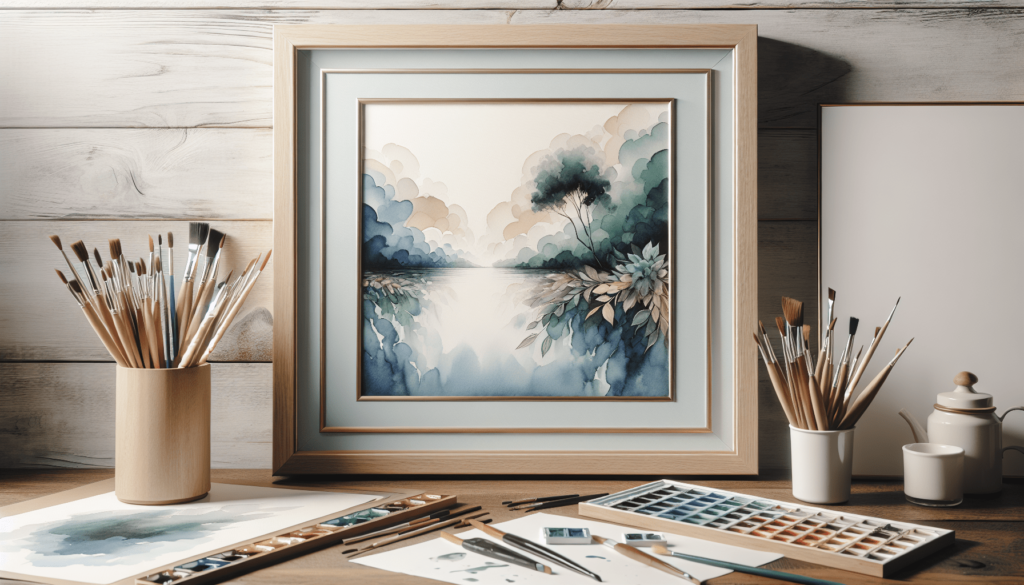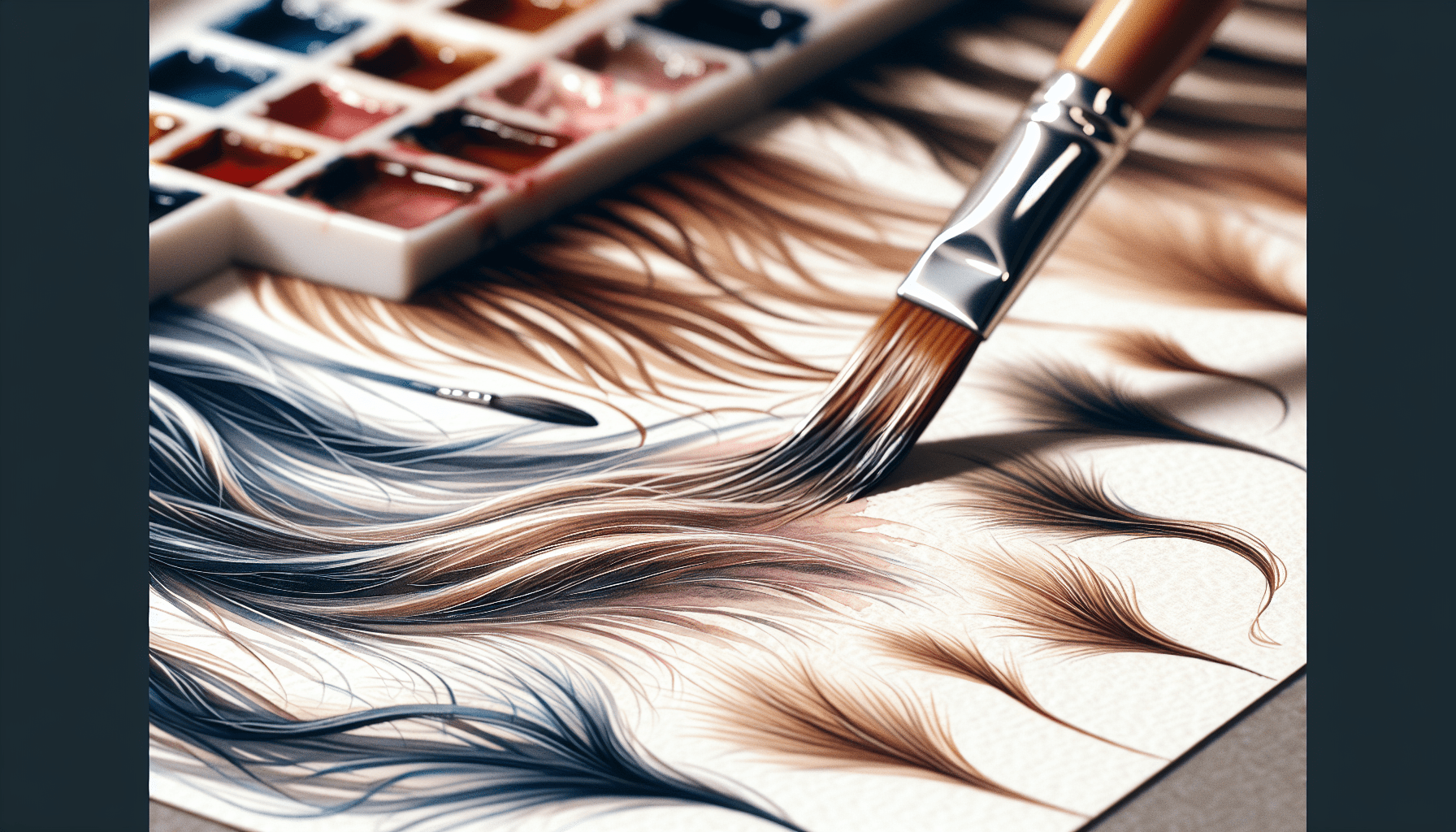Have you ever completed a watercolor painting only to feel daunted by the next step: framing it? Understanding how to frame your artwork properly is essential not only to display its beauty but also to preserve its integrity over time. This guide will walk you through the detailed process of framing a watercolor painting, ensuring your artwork remains a cherished piece for years to come.
Preparation Before Framing
Choosing the Right Materials
Selecting the appropriate materials is crucial. Use acid-free mats and backing to prevent discoloration and deterioration of your painting. Glass rather than acrylic is often preferred for watercolor because it does not create static. Here’s a brief table summarizing the materials you’ll need:
| Material | Purpose | Recommendation |
|---|---|---|
| Mat Board | Provides separation from the glass | Acid-free to prevent discoloration |
| Backing Board | Supports the painting | Acid-free foam core or cardboard |
| Glass or Acrylic | Protects the painting from the environment | Glass is preferred for watercolors |
| Frame | Encloses the entire setup | Wood or metal depending on style |
Measuring Your Artwork
Measure your artwork with precision. You’ll need to know the exact dimensions to choose an appropriately sized frame and mat board. Use a metal ruler and measure to the nearest millimeter to ensure accuracy.
Matting Your Watercolor Painting
Importance of Matting
The mat serves multiple purposes: it provides a visual border, creates space between the painting and the glass, and adds to the overall aesthetic of the framed piece.
Cutting the Mat
Using a high-quality mat cutter is imperative. A straight edge and sharp blade will provide the best results. Cut the outer edges to the dimensions of your chosen frame, and then cut the window (the inner edge) slightly smaller than your painting to keep it secure.
Centering Your Artwork
Center the painting within the mat window. Use archival mounting tape to secure the artwork lightly, allowing it to breathe and expand with changes in humidity.

Choosing the Right Frame
Frame Material and Finish
Frames come in various materials—wood, metal, composite—and finishes—matte, glossy, painted, stained. Your choice should complement the painting. A simple frame often works best for a busy artwork, while elaborate frames can enhance simpler designs.
Frame Size and Style
The frame should be proportional to the painting. Too large, and it can overwhelm the artwork; too small, and it may not adequately support it. Consider future-proofing by choosing a style that remains timeless.
Assembly
After assembling the painting, mat, backing board, and frame, secure them with appropriate fasteners. Clips, tension springs, and screws are commonly used to ensure everything stays in place.
Adding Protective Layers
Using Glass or Acrylic
Protection is essential to preserve your watercolor painting. Glass is usually chosen over acrylic as it is less prone to scratches and does not produce static, which can attract dust. Ensure the glass is clean and free of smudges before assembly.
UV Protection
Consider UV-protective glass or acrylic to shield your artwork from harmful UV rays that can cause fading. Especially for watercolors, which are inherently delicate and vulnerable to light exposure, this is likely a worthwhile investment.

Final Touches
Inspecting for Dust and Debris
Before sealing the frame, inspect rigorously for any dust, debris, or fingerprints inside the frame. Even the smallest speck can become a focal point once the frame is sealed.
Sealing the Frame
Seal the back of the frame using framing tape to keep out dust and moisture. This acts as a further protective barrier.
Adding Hanging Hardware
Install appropriate hanging hardware, such as D-rings and a strong wire. Ensure the hardware can support the weight of the frame and is mounted securely.
Displaying Your Artwork
Optimal Conditions
Place your framed watercolor painting in a location where it will not be subjected to direct sunlight or humidity fluctuations. Indoor environments with controlled lighting and stable temperatures are ideal.
Maintenance Tips
Regularly dust the glass and frame. Avoid using cleaning solutions directly on the glass; instead, spray a cloth lightly and then wipe the glass to avoid seeping liquid damaging the artwork.
Troubleshooting Common Issues
Warping
If your painting warps, it’s usually due to humidity or incorrect mounting techniques. Always use proper materials and methods to mitigate this risk.
Discoloration
Discoloration often results from non-acid-free materials or prolonged exposure to light. Ensure the use of archival-quality materials and avoid placing the artwork in direct sunlight.
Loose Artwork
If the painting moves within the frame, it might be due to inadequate securing. Re-mount using appropriate framing tape or securing methods.
Frequently Asked Questions
Is it necessary to use a mat with watercolor paintings?
Yes, it is generally necessary to use a mat because it provides a visual border, keeps the artwork away from the glass or acrylic, and enhances overall presentation.
Can I use regular glass instead of UV-protective glass?
While you can use regular glass, UV-protective glass is recommended as it helps to prevent fading and extends the lifespan of your watercolor painting.
What kind of tape should I use to mount my watercolor?
Always use archival, acid-free mounting tape. This ensures that the tape will not react with the painting over time.
By understanding and executing these detailed steps, you can professionally frame your watercolor paintings, ensuring they remain in excellent condition and display beautifully. Attention to detail and the use of appropriate materials will make a significant difference in preserving your artwork for future generations to enjoy.



